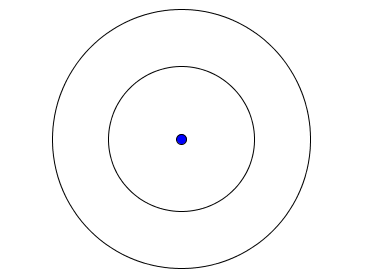Difference in circles' areas

Ajay learned that area of a circle is π times the square of it's radius. He calculated the difference in area of the above circles as 4 9 π when the difference in the radii of the above circles is given 7 . Is he right?
This section requires Javascript.
You are seeing this because something didn't load right. We suggest you, (a) try
refreshing the page, (b) enabling javascript if it is disabled on your browser and,
finally, (c)
loading the
non-javascript version of this page
. We're sorry about the hassle.
2 solutions
But, a point is nothing but a circle with zero radius. It is possible. You can have R=7 and r=0.Its possible. Answer should be YES.
@A Brilliant Member At that point it's just a plain old regular circle, not the figure shown in the problem.
Since the difference in area of the big circle and small circle is 4 9 π , this means that the areas of the small and big circles must be π and 5 0 π respectively. Therefore, the radii of the small and big circles are 1 and 5 0 respectively and the difference is ≈ 6 . 0 7 1 0 6 7 8 1 2 . The answer is N o .
Why specifically π and 5 0 π would be the only two possible areas whose difference gives 4 9 π ? Is there an intuition that n π − m π = 4 9 π where m and n are positive integers, will give the maximum value of n − m for n = 5 0 and m = 1 ?
According to the question,49(pi)=(pi)[R^2-r^2],where R and r are the radii of the big and small circle respectively.The equation is equivalent to:49=[R^2-r^].But,R-r=7(given),results in R+r=7.But R+r and R-r can never be simultaneously zero,as it results in either R or r = 0,which can never happen as R and r are the radii of 2 cicles.